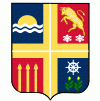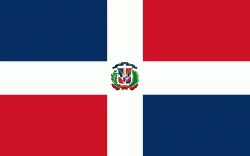La Romana (La Romana)
 |
 |
The modern La Romana International Airport was opened in 2000. The city is near several other cities, such as San Pedro de Macorís and the national capital, Santo Domingo de Guzmán. The city is a hub for a growing tourist industry with several nearby local resort spots, such as the beachfront Bayahibe, Dominicus, Casa de Campo, and the growing number of golf resorts that surround the area.
The city of La Romana was officially founded in 1897 as an oil town. After 1917 with the construction of a large sugar-mill the economy quickly shifted to sugar production. The commissioning of the sugar mill coincided with the rise in sugar prices worldwide, prompting the sugar industry to welcome workers from different parts of the country as well as other parts of the Caribbean, many families moved to La Romana for economic opportunities.
In early 1960, Gulf and Western Industries, Inc. purchased the sugar mill and started to invest in the livestock industry which was cemented in the province. Meanwhile, $20 million were invested to rebuild La Romana and build schools, clinics, housing and other infrastructure for workers. During the mid-1970s the American conglomerate began selling its Dominican assets, and at the same time built what is now one of the largest exclusive tourist resorts in the Dominican Republic, Casa de Campo.
Map - La Romana (La Romana)
Map
Country - Dominican_Republic
 |
 |
| Flag of the Dominican Republic | |
The native Taíno people had inhabited Hispaniola before the arrival of Europeans, dividing it into five chiefdoms. They had constructed an advanced farming and hunting society, and were in the process of becoming an organized civilization. The Taínos also inhabited Cuba, Jamaica, Puerto Rico, and the Bahamas. The Genoese mariner Christopher Columbus explored and claimed the island for Castile, landing there on his first voyage in 1492. The colony of Santo Domingo became the site of the first permanent European settlement in the Americas and the first seat of Spanish colonial rule in the New World. It would also become the site to introduce importations of enslaved Africans to the Americas. In 1697, Spain recognized French dominion over the western third of the island, which became the independent state of Haiti in 1804.
Currency / Language
| ISO | Currency | Symbol | Significant figures |
|---|---|---|---|
| DOP | Dominican peso | $ | 2 |
| ISO | Language |
|---|---|
| ES | Spanish language |















